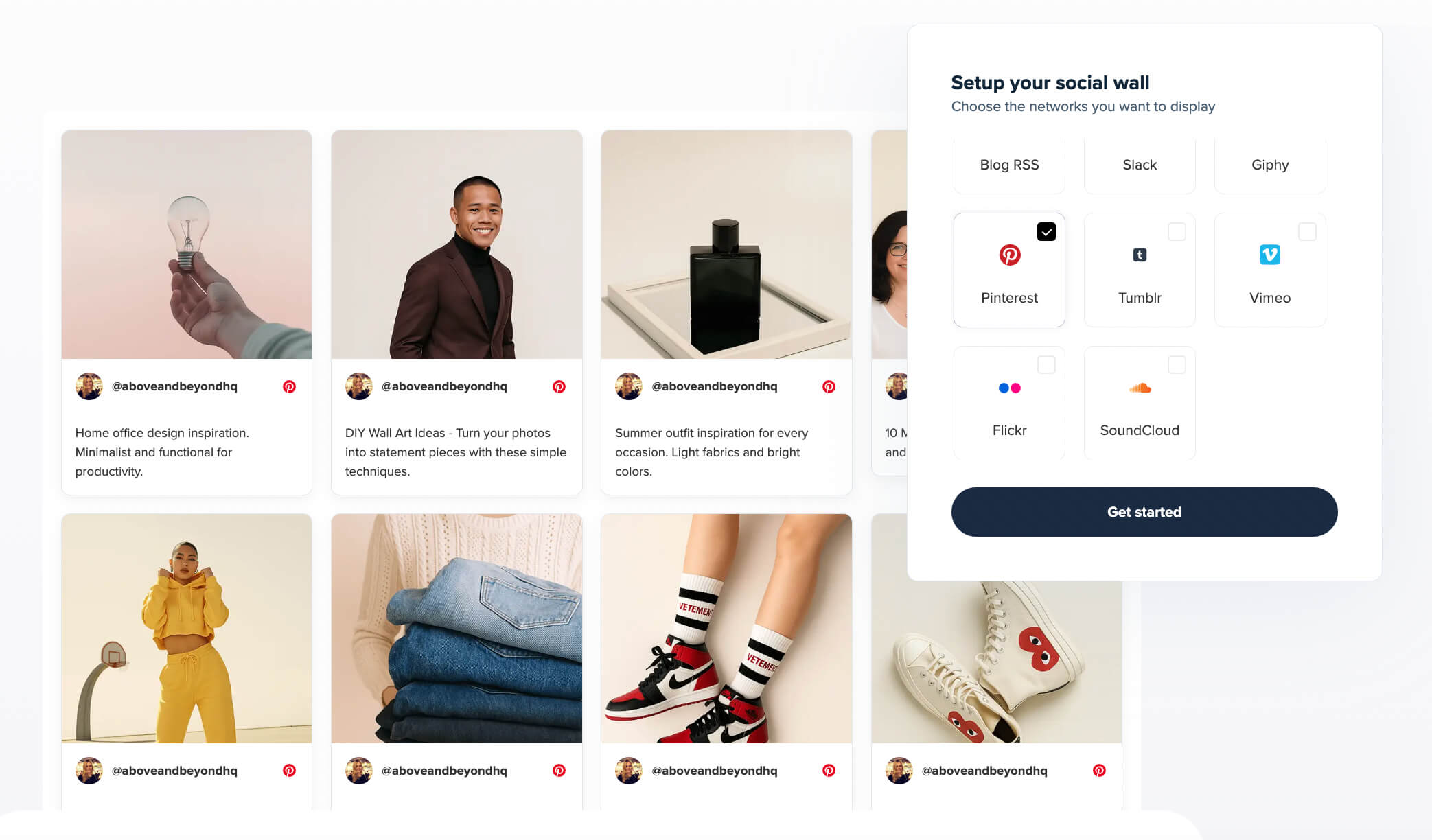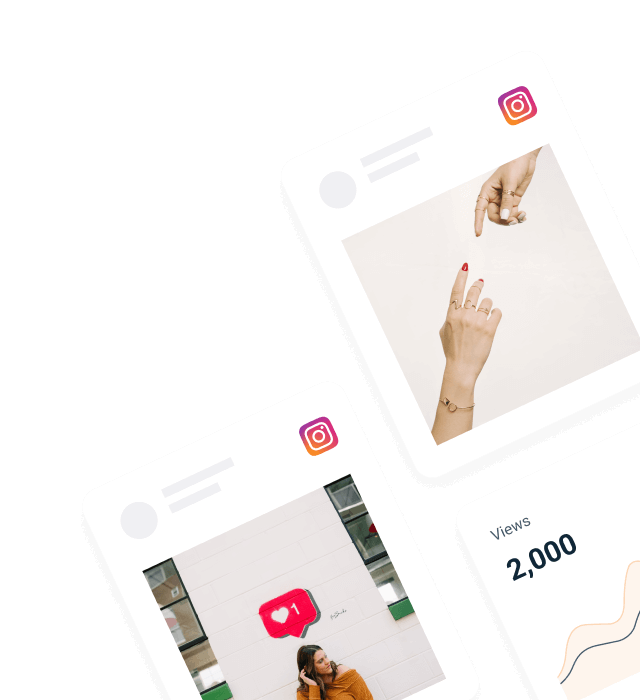Pinterest is now a powerhouse of visual discovery with more than 570 million monthly active users globally as of Q1 2025. For businesses, bloggers, and brands, Pinterest is more than a social media network—it’s a visual search engine that has the potential to drive huge organic traffic, enhance brand awareness, and grow sales. However, to achieve all that, you need a solid Pinterest SEO strategy beyond pinning beautiful images.
In this guide, you’ll discover:
- What Pinterest SEO is and why it matters
- How to optimize your Pinterest business account for search engine visibility
- The best Pinterest SEO tips for 2025
- How to conduct keyword research and find relevant Pinterest keywords
- How to optimize your pins, boards, and profile
- How to use Pinterest Analytics to refine your SEO strategy
- The role of Pinterest Ads in SEO
- Advanced strategies for more traffic and engagement
- Real-world examples and step-by-step guides
Regardless of whether you are an experienced marketer or a Pinterest newbie, these actionable pointers will enable you to rank in Pinterest search results, get in front of your target audience, and increase website traffic.
What is Pinterest SEO?
Pinterest SEO (search engine optimization) is the practice of optimizing your Pinterest account, pins, boards, and content so that they rank higher in Pinterest search results and are seen by more people. Pinterest differs from other social media websites in the following manner: Pinterest is a visual search engine—individuals search for ideas, products, and inspiration using keywords, and Pinterest’s algorithm displays the most suitable content.
A strong Pinterest SEO strategy helps you:
- Increase your search visibility on Pinterest and Google
- Drive more organic traffic to your website
- Reach users searching for your products or expertise
- Build brand authority in your niche

Why Pinterest SEO Matters in 2025
With 97% of Pinterest searches being unbranded, users are open to discovering new brands, products, and ideas. Pinterest’s search engine is a treasure trove for companies wanting to get in front of more users. The site’s “seasonal freshness” update boosted engagement on new pins by 18%, favoring those that regularly produce quality pins and timely content.
Pinterest is also a leading driver of social network website traffic. With 96 million Pinterest users in the U.S. alone, and the average user spending 1 hour and 31 minutes per month on the site, you’ll want to get in front of this active audience by mastering Pinterest SEO.
Pinterest SEO Basics: How the Pinterest Search Engine Works
Pinterest’s search engine employs a mix of factors to decide which pins, boards, and profiles to show in search results:
- Relevance to the search query (keywords in pin titles, descriptions, board titles, and your Pinterest profile)
- Engagement metrics (saves, clicks, comments, and shares)
- Freshness (new, original pins are prioritized)
- Domain quality (how often users engage with content from your website)
- Pin quality (high quality pins with clear images, keyword-rich titles and descriptions, and relevant details)
- User behavior (personalized results based on users’ past activity)
Understanding these ranking factors is the first step to building a successful Pinterest SEO strategy.
Setting Up and Optimizing Your Pinterest Business Account
To access Pinterest Analytics, Pinterest Ads, and more advanced SEO capabilities, you require a business account on Pinterest. Here is how to create and optimize your account for search engine optimization:
-
Convert to a Pinterest Business Account
- Go to your account settings and switch to a business account if you haven’t already.
-
Claim Your Website
- This boosts your domain quality and allows you to track website traffic from Pinterest.
-
Optimize Your Pinterest Profile
- Include your target keywords in your profile name and bio (“SEO Pinterest Tips for Bloggers & Brands,” for example).
- Add a professional profile photo and a keyword-rich meta description.
-
Enable Rich Pins
- Rich pins pull relevant details (such as product details, prices, or blog article titles) straight from your website, making your pins more useful and clickable.
-
Add Social Media Accounts
- Link your Instagram, YouTube, and other social media profiles to your Pinterest profile for additional content sources and cross-promotion.
Pinterest Keyword Research: How to Find Relevant Pinterest Keywords
Keyword research is the cornerstone of Pinterest SEO. Here’s how you can determine the correct keywords to use for your pins, boards, and profile:
-
Use the Pinterest Search Bar
- Start typing a keyword (e.g., “vegan chocolate cake recipe”) and note the autocomplete suggestions. These are popular search queries.
-
Explore Pinterest Trends
- Pinterest Trends shows you what’s trending and helps you find relevant Pinterest keywords for your niche.
-
Analyze Competitors
- Look at top-performing pins and boards in your niche. What keywords do they use in their pin titles and descriptions?
-
Check Pinterest Analytics
- Use Pinterest Analytics to see which keywords drive the most traffic to your pins and website.
-
Use Google SEO Tools
- You can use tools such as Google Keyword Planner, Moz, and SEMrush to identify high-volume and low-competition keywords that perform on both Pinterest and Google.
Target long tail keywords and specific keywords that are aligned with your target audience’s search intent. For instance, “pinterest seo strategy for ecommerce” or “how to optimize your pins for more traffic.
Creating SEO-Optimized Pinterest Boards
Pinterest boards are like categories for your content. Well-optimized boards help Pinterest understand your niche and surface your pins in relevant search results.
-
Create Boards Around Target Keywords
- Incorporate your most significant keywords in board titles (e.g., “Pinterest SEO Tips for Small Business”).
-
Write Keyword-Rich Board Descriptions
- Provide related keywords and describe what users can expect on the board. Select a pertinent Pinterest keyword (for example, “pinterest seo tips”).
-
Add Relevant Pins Consistently
- Pin consistently to each board to signal activity and relevance.
-
Organize Boards for Search Visibility
- Put your most relevant boards at the top of your Pinterest page.
How to Optimize Your Pins for Pinterest SEO
Each pin is a chance to rank in Pinterest search results and lead website traffic. Here’s how you can optimize your pins:
-
Pin Titles and Descriptions
- Utilize keyword-specific titles and pin descriptions that concisely describe the subject of the pin. Place your target keyphrase and similar keyphrases naturally.
-
High Quality Pins
- Use vertical images (2:3 aspect ratio), clear text overlay, and high resolution. High-quality pins get more engagement and are favored by the Pinterest search engine.
-
Add Alt Text and Meta Descriptions
- Alt text helps with accessibility and SEO. Meta descriptions can be pulled from your website if you use rich pins.
-
Use Hashtags and Relevant Details
- Add 2–5 relevant hashtags and include important keywords in the pin description.
-
Link to Relevant Content
- Ensure that every pin directs to a relevant blog post, product page, or landing page on your site.
Step-by-Step Guide: Creating an SEO-Optimized Pin
- Choose a relevant Pinterest keyword (e.g., “pinterest seo tips”).
- Design a vertical, high quality pin with a clear text overlay.
- Write a keyword-rich title (e.g., “10 Pinterest SEO Tips to Boost Your Website Traffic”).
- Add a detailed pin description with related keywords and a call to action.
- Include 2–5 relevant hashtags.
- Link to a blog post or landing page optimized for the same keyword.
Using Pinterest Analytics to Refine Your SEO Strategy
Pinterest Analytics is a great tool for monitoring your SEO progress. Here’s how you can use it:
-
Monitor Pin Performance
- Track impressions, saves, clicks, and engagement for each pin.
-
Analyze Search Queries
- Determine which search terms and keywords drive the most traffic to your pins and website.
-
Identify Top Boards and Content
- Prioritize the boards and types of content that bring the most engagement and website traffic.
-
Refine Your SEO Strategy
- Utilize analytics data to refresh your pin titles, descriptions, and board keywords for improved search visibility.

Pinterest Ads and SEO: How Promoted Pins Impact Search Results
Pinterest Ads (Promoted Pins) can enhance your SEO endeavors by elevating engagement and visibility. Here’s how you can utilize Pinterest Ads strategically:
-
Promote High Quality Pins
- Choose pins that already perform well organically for promotion.
-
Target Relevant Keywords and Audiences
- Use Pinterest’s ad targeting to reach users searching for your target keywords.
-
Test Different Ad Formats
- Try video pins, carousel pins, and product pins to see what drives more engagement.
-
Measure Results with Pinterest Analytics
- Track how promoted pins impact your organic search rankings and website traffic.

Advanced Pinterest SEO Tips for 2025
-
Schedule Pins Consistently
- Utilize tools to pin at times that are ideal for your audience.
-
Leverage Pinterest Trends and Analytics
- Keep ahead of seasonal trends and plan your content calendar accordingly.
-
Optimize for Google SEO
- Many Pinterest boards and pins appear in Google search results. Apply SEO best practices to get more exposure outside of Pinterest.
-
Create Content for Pinterest Search Bar
- Think about what users search for in the Pinterest search bar and create content that answers those queries.
-
Use Pinterest Business Account Features
- Take advantage of Pinterest Analytics, rich pins, and ad targeting to refine your SEO strategy.
-
Focus on Search Engine Optimization for All Content
- Optimize your blog posts, product pages, and landing pages for both Pinterest and Google SEO.
How Pinterest SEO Can Work in Practice
Take a food blogger targeting “vegan chocolate cake recipe.” They would begin by utilizing the Pinterest search bar and tools such as Google Keyword Planner to discover popular keywords. Next, they would develop a board named Vegan Chocolate Cake Recipes with a descriptive, keyword-rich description.
Then there’s creating good-quality pins with great visuals, bold overlay text, and keyword-rich titles. Activating rich pins draws additional information from the blog post—such as meta descriptions—making the pins more informative and click-worthy. Each pin directs back to the blog and contains related hashtags.
After publishing, the blogger would monitor performance using Pinterest Analytics to determine what’s performing well and refine pin descriptions as needed. They’d post new pins on a regular basis and promote high performers using Pinterest Ads to increase their audience.
This consistent, data-informed approach causes content to rank higher in Pinterest search, drive consistent traffic, and be shared more often—especially when coupled with compelling visuals and strategic keywording.
Bonus Tip: Amplify Your Pinterest Results with Juicer
While not a direct SEO tactic, Juicer is still a great way of showcasing your Pinterest content on your site. By automatically importing your newest pins into a branded feed, Juicer makes it easy to keep your website updated with fresh content, which search engines love. It can also boost time on site and call out user-generated content. For ecommerce, you can show Pinterest product-related posts and customer testimonials, allowing visitors to see your products in use in the real world. Juicer offers analytics so you can monitor which pins are generating the most engagement and optimize your strategy accordingly. If you’re promoting campaigns across multiple social networks, Juicer can collect content from all of them, providing a single, dynamic social wall.

You can set up UTM tracking on your Pinterest links to measure what’s actually driving results in Google Analytics. While Juicer doesn’t add UTM parameters automatically, you can include them in your own content and use Juicer’s analytics to double down on what works.
Resources and Further Reading
Final Thoughts
Pinterest is a unique platform where creativity meets search intent. By using these advanced strategies and making the most of tools like Juicer, you can turn Pinterest into a real engine for business growth. Stay curious, keep testing, and don’t be afraid to try new things—your next big win might be just one pin away.
Want to see how Juicer can help you get more from Pinterest? Try Juicer for free today!




